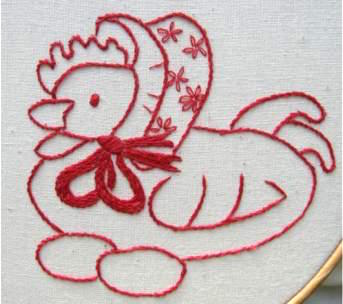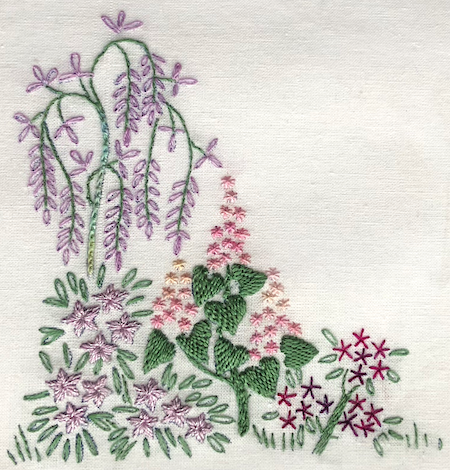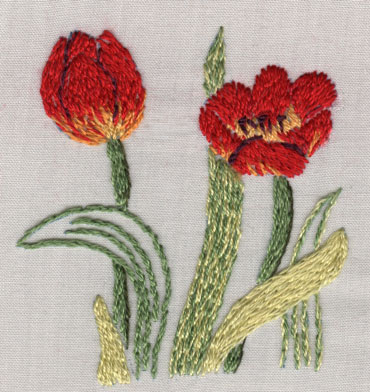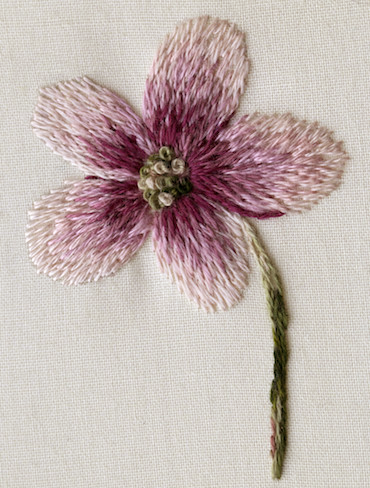- Home
- Redwork
Redwork Embroidery: A Journey Through Time
Join me on a journey through the captivating world of redwork embroidery, a craft that marries simplicity with elegance.
This guide will walk you through its origins, techniques, and timeless patterns, providing you with a comprehensive understanding of this beloved needlework tradition.
The Roots of Redwork Embroidery
Redwork embroidery emerged in the late 1800s, capturing hearts with its straightforward approach and cost-effective nature.
The craft's name hails from the use of Turkey red thread, a colorfast dye derived from the madder plant's roots found in Asia and Europe.
These roots undergo a process of drying, grinding, and boiling with the thread to produce a distinct, rich red hue.
Initially, Turkey red was the sole colorfast option, which led to its widespread adoption. Today, a myriad of thread types exist, yet enthusiasts often choose Turkey red for its historical value and distinctive qualities.
Victorian Elegance: Redwork's Place in History
During the Victorian era, after the lavish embellishments on crazy quilting, redwork became the method of choice for adorning a variety of household items. From the practical dish towel to the decorative pillow sham, redwork embroidery made its mark on a variety of textiles:
- Decorative coverlets and quilts
- Cozy cushions and pillow covers
- Graceful dresser scarves
- Playful toys and laundry bags
- And more traditional household textiles
Penny Squares: A Traditional Trend
The early 1900s saw the rise of "Penny Squares," preprinted blocks that captured the imagination of needleworkers.
These squares, once embroidered, were pieced together to create exquisite quilts and pillow shams.
Iconic motifs like Sunbonnet Sue and her counterpart, Overall Sam (or Bill), emerged from this trend, securing a place in the hearts of quilters for years to come.
The influence of artist Kate Greenaway is particularly notable, with her idyllic illustrations of children in period attire inspiring countless redwork pieces. Her art, reminiscent of Regency fashion, continues to spark creativity in today's embroiderers.
The Charm of Lettering
Original redwork patterns often incorporated lettering, adding a personalized and intimate dimension to the work.
Phrases like "Good Morning," "Good Night," and "Sweet Dreams," rendered in elegant script, brought a unique narrative to each piece, enhancing its sentimental value.
Getting Started with Redwork Embroidery
To help you get started, I have created a free redwork embroidery pattern for your enjoyment and learning.
Pattern Selection for Newcomers
If you're looking for inspiration for your next redwork project, consider using the pages of a child's coloring book. These books typically feature simple, outlined drawings that are perfect for this embroidery technique.
However, be sure to follow copyright laws if you plan to sell your finished piece.
With a bit of creativity and respect for intellectual property, you can use these coloring book pages as a starting point for your own unique and charming redwork designs.
Frequently, you may come across collections of designs that revolve around a shared concept, like the 12 months of the year.
Start by choosing a single design initially. A large collection can be overwhelming for a beginner. Instead, focus on completing one design before moving on to the next. This will help you develop your skills and gain confidence in your abilities before tackling more complex projects.
Fabric Choices for Redwork
Many patterns are available online, which you can trace or iron onto muslin or calico fabric.
Muslin is a plain weave cotton fabric that is perfect for embroidery. While calico is a slightly heavier cotton fabric that is great for creating more durable pieces. Once you have your pattern and fabric, you can start stitching away!
Essential Stitches for Your Palette
Redwork's allure lies in its simplicity and speed, making it an ideal starting point for novices or those pressed for time. The craft involves a handful of fundamental stitches:
- Stem Stitch: For outlining designs
- Split Stitch: For filling smaller areas
- Satin Stitch: For covering larger sections
- French Knots: For adding texture and depth
The outline of your design will usually be stitched in either outline or stem stitch. These look remarkably alike and differ only in the position you hold the working thread. Keep the thread above your stitching line for outline stitch, and below for stem if working from left to right along your line.
The resulting lines of stitches will appear ropelike: however, stem and outline will twist in opposite directions.
If you are left-handed (and work from right to left) the thread position will reverse, so it will be held below your stitching line for outline, and above for stem.
Contrast is created in redwork by solidly filling some smaller areas with stitches. Depending on the size of these, the stitches normally used are either split stitch or satin stitch.
Smaller dots or details can be added using French knots or detached chain stitches (or lazy daisy stitch).
Dealing with Bleeding Threads
Quality threads are an investment against dye bleeding, ensuring your embroidery remains pristine.
Redwork Today
Many modern-day needleworkers like to stitch redwork quilt blocks, keeping to authentic hand-drawn, naïve patterns of animals, birds, flowers, fruit, vegetables and people.
I added a redwork strawberry to a crazy quilt block featuring a strawberry patterned fabric. Click here to find out how I put it together.
Conclusion
Redwork embroidery is more than just a craft; it's a historical tapestry stitched with threads of simplicity, nostalgia, and personal expression. Whether you're a seasoned stitcher or just picking up the needle, the world of redwork offers a rewarding and enriching experience.
Now that you're familiar with the rich tapestry of redwork's history, why not try your hand at this endearing art form? Download the free redwork embroidery pattern and begin stitching your way into history.



